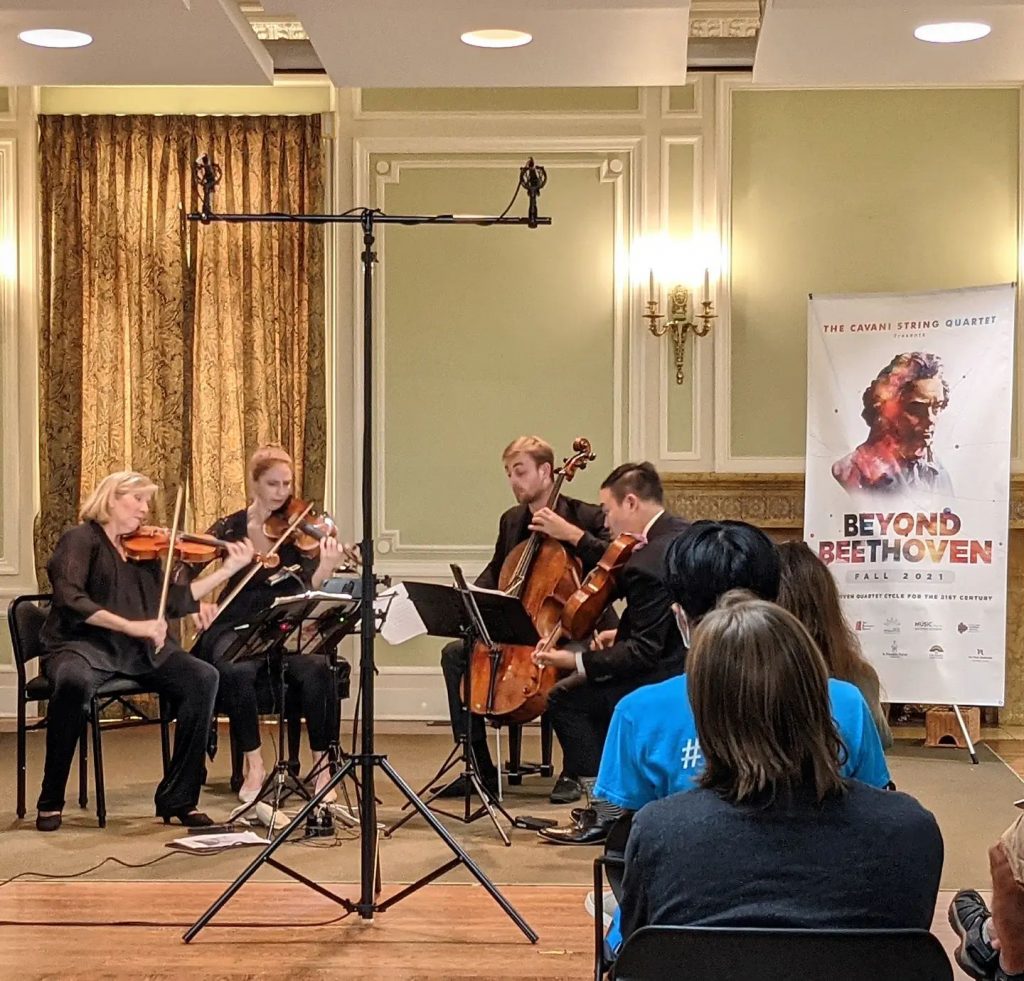by Daniel Hathaway

Now under the Cavani’s artistic direction following the passing of its founder, Christine Haff-Paluck, ART also introduced a new venue for its concerts, previously presented at Pilgrim UCC.
Each concert in “Beethoven and Beyond” includes two of LvB’s string quartets with a contemporary work in between, usually by way of contrast, although in her introductory remarks, primo violinist Annie Fullard drew thematic connections between the pizzicati in Beethoven’s “Harp” Quartet and Jessie Montgomery’s Strum.
The latter work draws much more than just plucked string sounds from the ensemble. Montgomery is herself a violinist — as Cavani second violinist Catherine Crosby noted in her spoken introduction — so her writing is idiomatic as well as adventuresome. In its final form (it started out as a quartet of cellos), the piece was tailored for the Catalyst Quartet in a performance celebrating the 15th annual Sphinx Competition. Its role in Sunday’s concert was indeed to contrast with Beethoven’s Opus 74 and 132 quartets, for which it effectively changed the air in the room.
As an ensemble, the Cavani have run the musical marathon of presenting all sixteen Beethoven quartets in a single season at least twice before, but in 2021, three of the players are new to the project, and the time period has been compressed into a three-week period. That’s a mind-bending and physically daunting challenge, and if the sixteen works show some ragged edges this time around, blame COVID. (Always blame COVID!)
Generally speaking, the Cavani reflect an historical style of quartet playing where the first violin dominates the ensemble, and although there are plenty of passages where the composer has written that role into the score, there were moments during both quartets on Sunday where the other three players needed to play more assertively to achieve a good balance.
The highlight of Op. 132 is the Heiliger Dankgesang, Beethoven’s song of thanksgiving “in the Lydian mode” for his recovery from a life-threatening illness. The Cavani gave it the pure, devout treatment it deserved every time the idea reoccurred, but also allowed Beethoven’s joy to shine out whenever that more energetic and playful idea suddenly intervened.
Happily for Arts Renaissance Tremont, St. Wendelin is an engaging venue with an intimate feeling and a lively acoustic, thanks to a shallow, barrel-vaulted ceiling. The Burning River Brass should also sound terrific when they play here on December 19.
The Cavani’s Beethoven series continues on December 7 on the Cleveland Chamber Music Series and culminates with a grand finale at Severance Music Center on December 14.
One question: why weren’t the individual members of the Cavani Quartet named anywhere in the printed program? For the record, they are Annie Fullard and Catherine Cosbey, violins, Eric Wong, viola, and Kyle Price, cello.
Published on ClevelandClassical.com November 24, 2021.
Click here for a printable copy of this article



